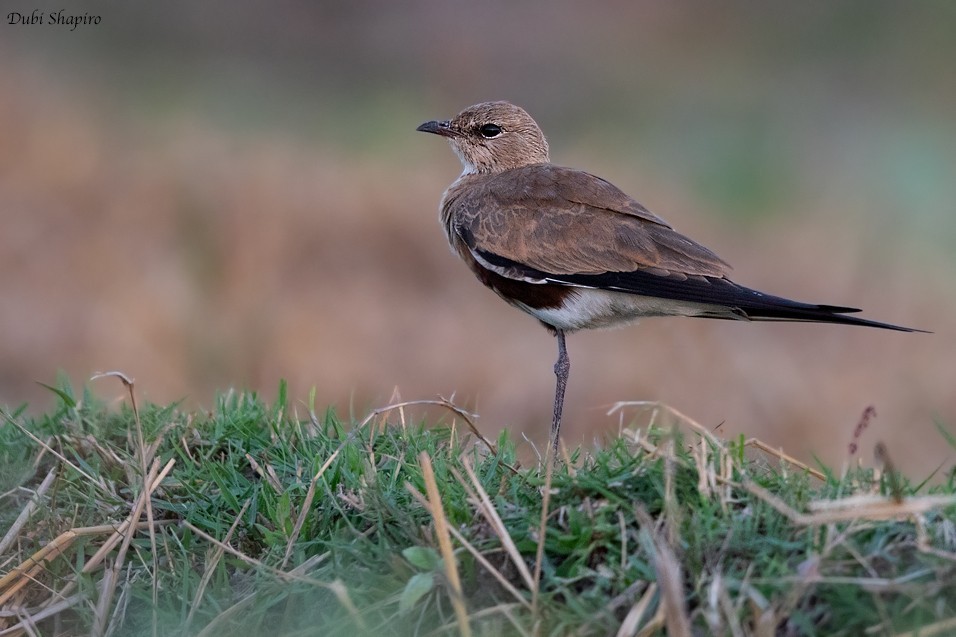Australian Pratincole
A species of Australian Pratincole Scientific name : Stiltia isabella Genus : Australian Pratincole
Australian Pratincole, A species of Australian Pratincole
Botanical name: Stiltia isabella
Genus: Australian Pratincole
Content
Description General Info
 Photo By Dubi Shapiro
Photo By Dubi Shapiro Description
The Australian pratincole is a medium-sized slender shorebird with long legs, long pointed wings and a short decurved bill. It is 19–24 cm long, has a wingspan of 50–60 cm and weighs 55-75grams. The sexes look alike however their breeding and non-breeding plumage differs. Breeding plumage – The head, neck, breast and upperparts are a sandy brown grading. The wings are pointed and black and there is a black loral strip. The chin and throat are white and the breast is a sandy brown. The bill is bright red with a black base and the iris is dark brown. Legs and feet are grey to black. Non-breeding plumage – This plumage is not well known as there are also effects from seasonal and individual variation. The loral stripe is fainter than when in breeding plumage and the base of the bill is paler. The upperparts are grey-brown with sandy-buff fringes. Sometimes there are dark flecks at the borders of the pale throat. Juvenile – The plumage is similar to a non-breeding adult but a slightly paler sandy brown colour. The lores lack the black colour and the forehead, crown and nape are streaked dark brown. The bill is grey-black with a faint reddish base. In flight – The upperbody and inner wing are sandy brown with black on the outer wing. The tail is square-cut with the upper-tail coverts and sides of the tail white. The Australian pratincole is slightly slimmer and smaller in size with longer legs than oriental pratincole (Glareola maldivarum). Juveniles with worn plumage and birds in non-breeding plumage could also be confused with the oriental pratincole 
Size
24 cm
Nest Placement
Ground
Feeding Habits
Australian Pratincole primarily consume insects, spiders, and centipedes, foraging by hawking in the air or pecking from the ground. They exhibit unique stalking and darting behaviors with an occasional one-wing spread. Active during daylight, their peak foraging occurs at dawn and dusk, and they possess salt glands enabling them to drink saline water.
Habitat
The habitat of australian Pratincole encompasses open and sparsely vegetated terrains, commonly associated with black-soil plains, scrub-dotted ridges, and gravel stretches. These birds favor regions with a mix of low shrubs and pebbly surfaces, often in proximity to bodies of water such as lakes, lagoons, and rivers. They are also known to inhabit agricultural fields, particularly rice fields that are not in the cultivation phase. Australian Pratincole avoids mountainous elevations and is typically linked to lower-lying regions.
Dite type
Omnivorous
General Info
Feeding Habits
Bird food type
Behavior
When they first arrive in the breeding grounds they appear to already be paired. At this time, the birds appear to be maintaining their bonds and possibly entering into courtship rituals. It appears that the nest site selection is part of the pair-bond ritual with both sexes involved equally. They have been observed running to a spot where one sits down and shuffles its belly and throws small objects sideways. The mate watches, then selects another spot and repeats the ritual. 
Distribution Area
The habitat of the Australian pratincole is treeless, open and sparse wooded plains, grasslands, claypans and gibberstone. Most of these areas are usually in arid and semi-arid rainfall zones. They are also sometimes found around the margins of wetlands, creeks, river beds, bore drains, lagoons, springs, claypans and sewage farms. During the breeding season they need scattered low shrubland as the chicks use the shrubs to hide and shelter in. 

 Photo By Dubi Shapiro
Photo By Dubi Shapiro Scientific Classification
Phylum
Chordates Class
Birds Order
Shorebirds Family
Pratincoles and coursers Genus
Australian Pratincole Species
Australian Pratincole